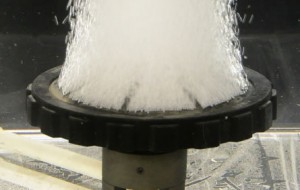 In a previous article, we explained the process of aeration and the necessity of aeration in supporting the growth of aerobic bacteria. Learn about the importance of aerobic bacteria here.
In a previous article, we explained the process of aeration and the necessity of aeration in supporting the growth of aerobic bacteria. Learn about the importance of aerobic bacteria here.
Aeration is typically achieved through the use of a pump or aerator. There are various types of aerators and they can be distinguished from one another by the method each uses to produce air flow and the method each uses to deliver that air into the septic tank.
Aerator Types Chart
Aerator Type | Air Flow Method | Air Delivery Method |
|---|---|---|
| Linear Air Pump | Diaphragm | Diffuser |
| Shaft Aerator | Hollow Shaft Design | Aspirator Tip |
| Rotary Vane | Rotor/Carbon Vanes | Diffuser |
| Regenerative Blower | Fan/Impeller | Diffuser |
| Submersible | Impeller | Tube Drawn/Impeller |
This chart shows each aerator type and its air flow and air delivery methods. Click on the aerator name to view an example of the aerator type and to read more about it.
In terms of installation, maintenance and operation, each aerator type has its advantages. In some circumstances, several aerator types may be used to effectively produce and deliver the proper amount of dissolved oxygen into the septic tank. In choosing the best aerator for your septic system, we recommend that you speak with an experience septic professional.




 2016
2016 2016
2016














